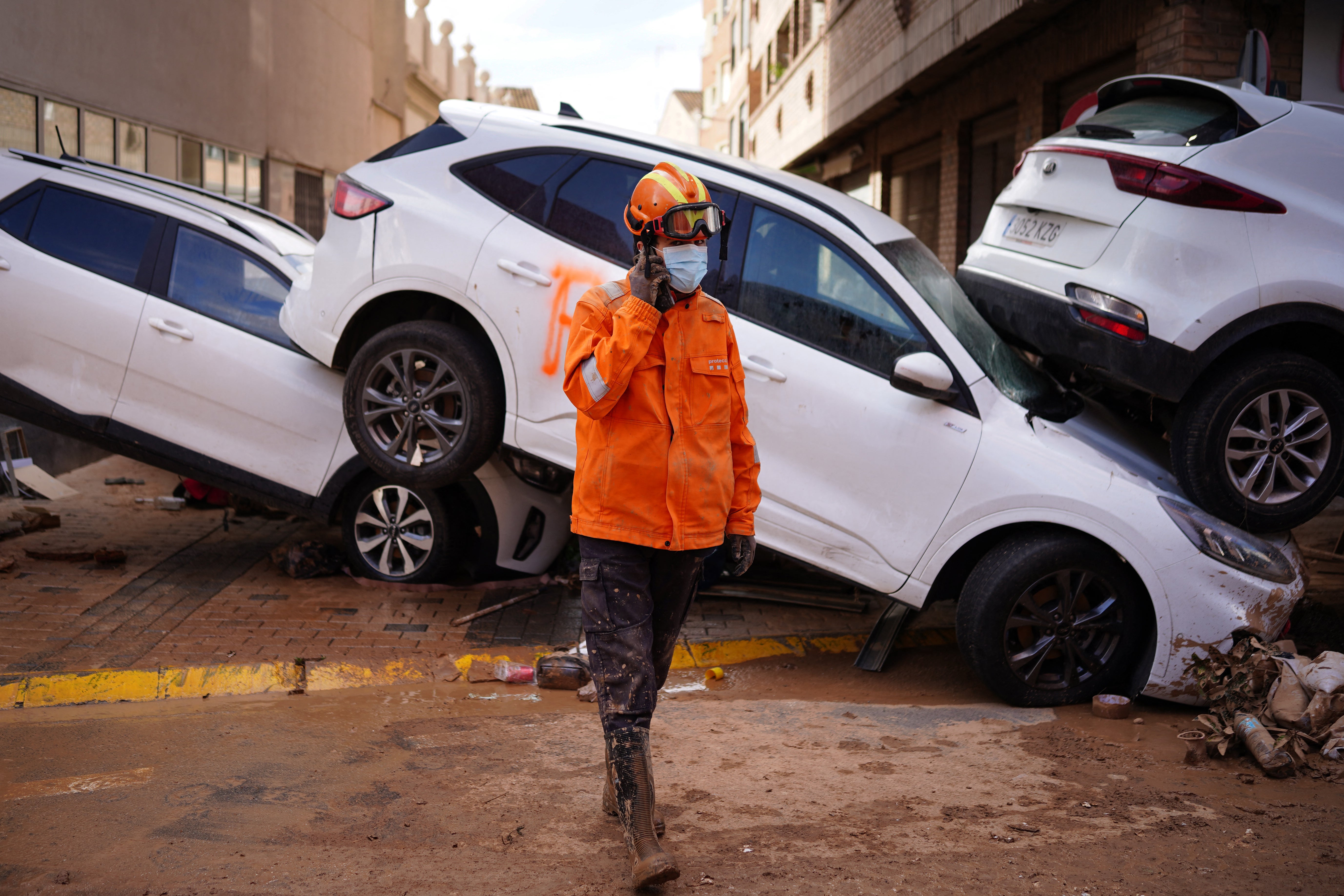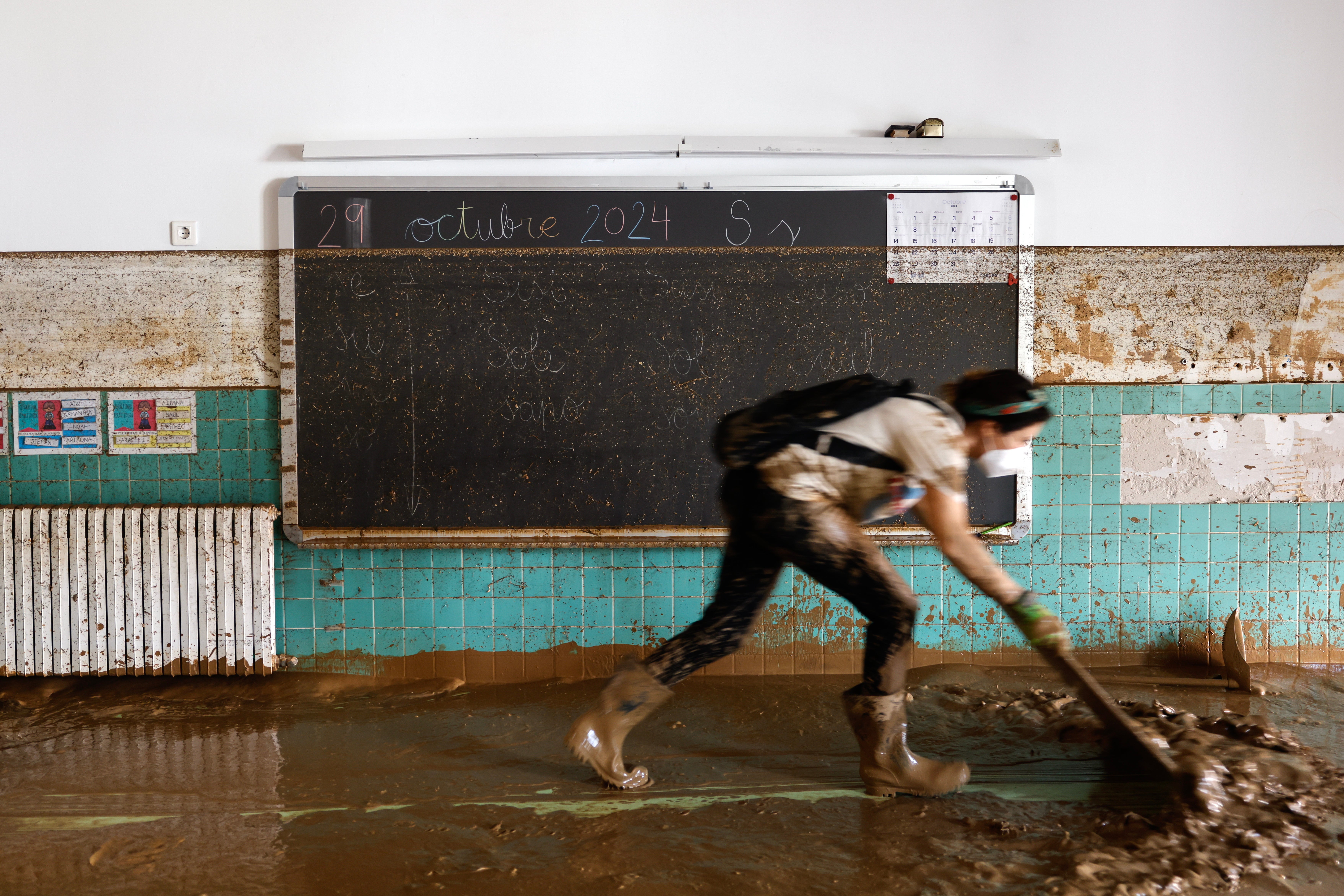Spain floods: Families fear bodies of loved ones are waiting to be discovered in the mud
The flooding has left behind post-apocalyptic scenes

Your support helps us to tell the story
From reproductive rights to climate change to Big Tech, The Independent is on the ground when the story is developing. Whether it's investigating the financials of Elon Musk's pro-Trump PAC or producing our latest documentary, 'The A Word', which shines a light on the American women fighting for reproductive rights, we know how important it is to parse out the facts from the messaging.
At such a critical moment in US history, we need reporters on the ground. Your donation allows us to keep sending journalists to speak to both sides of the story.
The Independent is trusted by Americans across the entire political spectrum. And unlike many other quality news outlets, we choose not to lock Americans out of our reporting and analysis with paywalls. We believe quality journalism should be available to everyone, paid for by those who can afford it.
Your support makes all the difference.Francisco Murgui went out to try to salvage his motorbike when the water started to rise. But he never came back.
One week after catastrophic flooding devasted eastern Spain, Marïa Murgui still holds out hope that her father is alive and among the unknown number of the missing.
“He was like many people in town who went out to get their car or motorbike to safety,” the 27-year-old told The Associated Press. “The flash flood caught him outside, and he had to cling to a tree in order to escape drowning. He called us to tell us that he was fine, that we shouldn’t worry.”
But when Marïa set out into the streets of Sedavi to try to rescue him from the water washing away everything in its path, he was nowhere to be found.
“He held up until 1 in the morning,” she said. “By 2, I went outside with a neighbor and a rope to try to locate him. But we couldn’t find him. And since then, we haven’t heard anything about him.”

At least 218 have been confirmed dead after a deluge caused by heavy rains late on Oct. 29 and the next morning swamped entire communities, mostly in Spain’s Valencia region, catching most off guard. Regional authorities have been heavily criticized for having issued alerts to mobile phones some two hours after the disaster had started.
Authorities have yet to any give an estimate of the missing seven days on. Spanish state broadcaster RTVE, however, shows a steady stream of appeals by people who are searching for family members who are not accounted for.Maria Murgui herself has posted a missing person’s message on social media with a photo of her father, a 57-year-old retiree.
“This is like riding a rollercoaster. Sometimes I feel very bad and sometimes I feel better. I try to stay positive,” she said. “This truly is madness. We don’t know what else to do. Neither does anybody else in town.”
While many search for their loved ones, the gargantuan recovery efforts in Sedavi and more than 60 other communities slowly moves forward.
The floods have let behind post-apocalyptic scenes.

Street after street in town after town is still covered with thick brown mud and mounds of ruined belongings, clumps of rotting vegetation, and wrecked vehicles. A stench arises from the muck.
In many places, people still face shortages of basic goods, and lines form at impromptu emergency kitchens and stands handing out food. Water is running again but authorities say it is not fit for drinking.
The ground floors of thousands of homes have been ruined. It is feared that inside some of the vehicles that the water washed away or trapped in underground garages there could be bodies waiting to be recovered.
Thousands of soldiers are working with firefighters and police reinforcements in the immense emergency response. Officers and troops are searching in destroyed homes, the countless cars strewn across highways, streets, or lodged in the mud in canals and gorges.

Authorities are worried about other health problems caused by the aftermath of the deadliest natural disaster in Spain’s recent history. They have urged people to get tetanus shots and to treat any wounds to prevent infections and to clean the mud from their skin. Many people wear face masks.
Thousands of volunteers are helping out, filling the void left by authorities. But the frustration over the crisis management boiled over on Sunday when a crowd in hard-hit Paiporta hurled mud and other objects at Spain’s royals, Prime Minister Pedro Sanchez and regional officials when they made their first visit to the epicenter of the flood damage.
Sanchez’s national government is set to announce a new package of relief on Tuesday.
Join our commenting forum
Join thought-provoking conversations, follow other Independent readers and see their replies
Comments